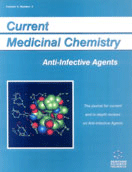Abstract
The rapid development of antibiotic resistance among the major respiratory pathogens has created a serious problem for the effective management of respiratory tract infections. There is a great medical need for new antibiotics which address the problem of antibiotic resistance. Under these circumstances, several novel series of macrolides with a common C-3 ketone group were recently introduced. The information in this area has grown rapidly during the past several years, that has allowed us to deduce some important conclusions regarding structure-activity relationships. The C-3 cladinose sugar attached to the 14-membered ring macrolides is believed to be responsible for the inducibility of macrolide resistance. This moiety also appears to be responsible for efflux resistance. Removing the cladinose and introducing a ketone group at the C-3 position can effectively prevent induction of resistance. This modification can also improve activity against efflux resistance. However, introduction of the C-3 k etone group cannot independently address the resistance problems caused by methylation of ribosome (MLSB resistance). In order to overcome such resistance, an anchor group must be properly attached to the macrolide skeleton. This anchor group can be introduced at several positions of the macrolide ring. Two successful examples are the 6-O-substituted ketolide ABT-773 and the 11,12-carbamate ketolide telithromycin. Both compounds are currently under clinical development for the treatment of respiratory tract infections.
Keywords: Ketolides, Macrolide Antimicrobial Agents, Carbamate ketolides, Tricylic ketolides
 18
18

